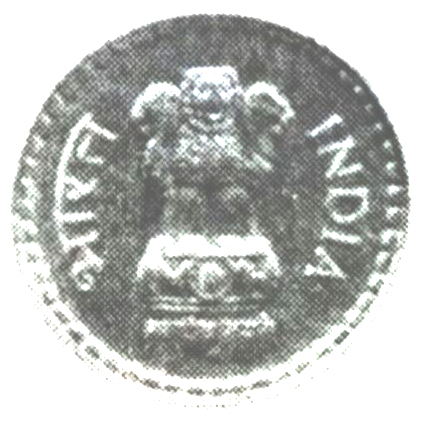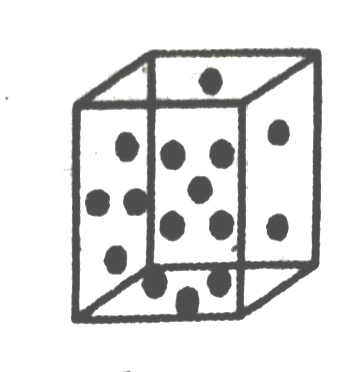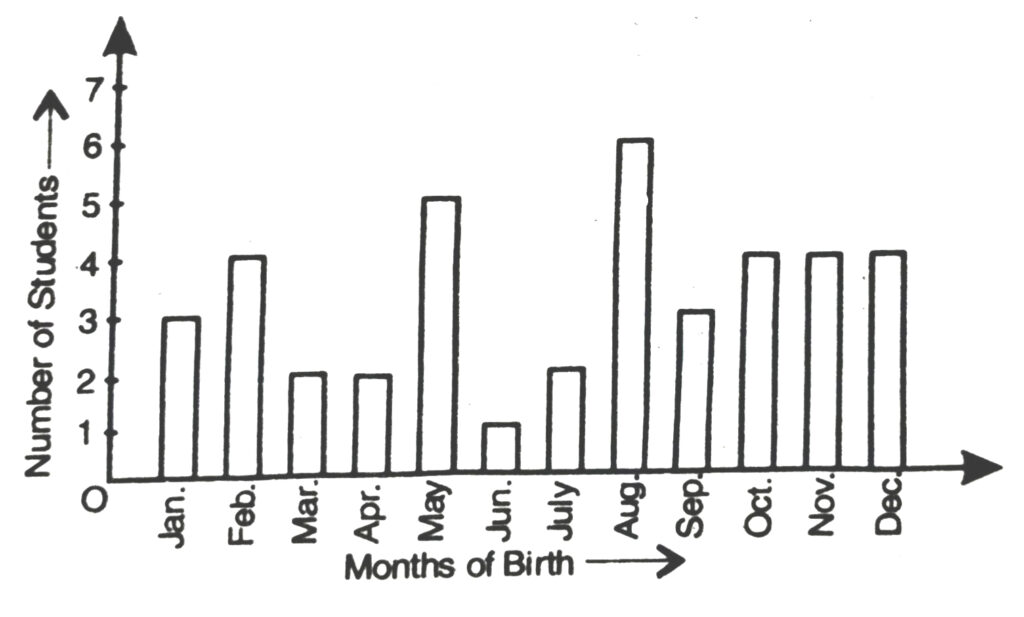JKBOSE 9th Class Mathematics Solutions Chapter 14 A Probability
JKBOSE 9th Class Mathematics Solutions Chapter 14 A Probability
JKBOSE 9th Class Mathematics Solutions Chapter 14 A Probability
Jammu & Kashmir State Board JKBOSE 9th Class Mathematics Solutions
J&K class 9th Mathematics 14 A Probability Textbook Questions and Answers
INTRODUCTION
We often use phrases such as
(i) It will probably rain today.
(ii) I doubt if he will pass the test.
(iii) Most probably Meenakshi will stand first in the annual examination.
(iv) Chances are high that the prices of Petrol will go up.
(v) Odds of winning a match are in favour of our school team.
(vi) There is a 50-50 chance of India winning a toss in today’s match.
The words ‘probably’, ‘doubt’, ‘most probably’, ‘chances’ etc. used in the above phrases involve an element of uncertainity. For example in (i), ‘probably rain’ will mean it may rain or may not rain today. We are predicting rain today based on our past experience when it rained under similar conditions. Similar predictions are also made in other. cases listed in (ii) to (vi).
This tentativeness of ‘may be’, ‘probably’ is often measured numerically by means of ‘Probability’. In this chapter, we aim to develop a basic understanding of this concept.
Probability has been used extensively in various areas such as Science, Commerce (to determine the premiums on insurance policies), Biology, Sociology etc.
Probability-an Experimental Approach
Definitions :
(i) Trial. Trial is an action which results in one of several outcomes. For example;
(a) toss of a coin is called a trial where out comes in tossing a coin are Head and Tail.

(b) throw of a die is also a trial where outcomes in throwing a die are 1, 2, 3, 4, 5 and 6

(ii) Event. Occurance of only one outcome out of all possible outcomes of a trial is called an event. For example; while tossing a coin coming up of a head is an event. Coming up of a tail is also an event.
Probability-Mathematical Approach
The chance or probability of an event happening is close to Pancing the ratio given by
Number of trials in which the event happened/ The total number of trials or we say that,
Probability = Experimental probability = Number of favourable events/The total number of trials
TEXT BOOK EXERCISE – 14.1
1. In a cricket match a batsman hits a boundary 6 times out of 30 balls he plays. Find the probability that he did not hit a boundary.
Solution.— Total number of balls played by batsman = 30
Number of balls hit in boundary = 6
Number of balls that did not hit the boundary
= 30 – 6 = 24
P (batsman did not hit the boundary)
= Number of times he does not hit ball/Total number of balls played by him
= 24/30 = 4/5
2. 1500 families with 2 children were selected randomly and the following data were recorded :
| Number of girls in a family | Number of families |
| 2 | 475 |
| 1 | 814 |
| 0 | 211 |
Compute the probability of a family, chosen at random, having
(i) 2 girls
(ii) 1 girl
(iii) No girl.
Also check whether the sum of these probabilities is 1.
Solution.— (i) Total number of families = 1500
Number of families having 2 girls = 475
Probability of a family having 2 girls i.e. P (Family having 2 girls)
= Number of families having 2 girls/Total number of families
= 475 19./1500 = 19/60
(ii) Number of families having 1 girl = 814
∴ P (family having 1 girl)
= Number of families having 1 girl/Total number of families
= 814/1500 = 407/750
(iii) Number of families having no girl = 211
∴ P (family having no girl)
= Number of families having no girl / Total number of families
= 211/1500
Checking :
Sum of all probabilities
i.e. P(2 girls) + P(1 girl) + P(No girl)
= 19/60 + 407/750 + 211 + 1500
= 475 + 814 + 211 / 1500 = 1500/1500 = 1
Yes, the sum of probabilities is 1.
3. In a particular section of Class IX, 40 students were asked about the months of their birth and the following graph was prepared for the data so obtained :

Find the probability that a student of the class was born in August.
Solution.— From the bar graph we observe that :
Total number of students of Class IX = 40
Number of students of Class IX born in August = 6
∴ P (A student born in August)
= Number of students born in August/Total number of students in the class
= 6/40 = 0.15.
4. Three coins are tossed simultaneously 200 times with the following frequencies of different outcomes :
| Outcome | Frequency |
| 3 heads | 23 |
| 2 heads | 72 |
| 1 head | 77 |
| No head | 28 |
If the three coins are simultaneously tossed again, compute the probability of 2 heads coming up.
Solution.— Total number of times three coins tossed = 200
Frequency of 2 heads coming up = 72
The probability of 2 heads coming up i.e. P (2 heads coming up)
= Frequency of 2 heads/Total number of times three coins tossed
= 72/200
= 9/25
5. An Organisation selected 2400 families at random and surveyed them to determine a relationship between income level and the number of vehicles in a family. The information gathered is listed in the table below :
| Vehicles per family |
| Monthly income in ₹ | 0 | 1 | 2 | Above 2 |
| Less than | 10 | 160 | 25 | 0 |
| 7000-10000 | 0 | 305 | 27 | 2 |
| 10000-13000 | 1 | 535 | 29 | 1 |
| 13000-16000 | 2 | 469 | 59 | 25 |
| 16000 or more | 1 | 579 | 82 | 88 |
Suppose a family is chosen. Find the probability that the family chosen is :
(i) earning ₹ 10000-13000 per month and owning exactly 2 vehicles. 10
(ii) earning ₹ 16000 or more per month and owning exactly 1 vehicle.
(iii) earning less than ₹ 7000 per month and does not own any vehicle.
(iv) earning ₹ 13000-16000 per month and owning more than 2 vehicles.
(v) not more than 1 vehicle.
Solution.— Total number of families surveyed by a company = 2400
(i) Number of families earning
₹ 10000 – ₹ 13000 per month and owning exactly 2 vehicles = 29
∴ Probability of a family chosen whose monthly earning is ₹ 10000 – ₹ 13000 and owning exactly 2 vehicles = 29/2400.
(ii) Number of families earning ₹ 16000 or more per month and owning exactly 1 vehicle = 579
∴ Probability of a family chosen whose monthly earning is ₹ 16000 or more and owning exactly 1 vehicle = 579/2400
(iii) Number of families earning less than ₹ 7000 per month and does not own any vehicle = 10
∴ P (less than ₹ 7000 and no vehicle) = 10/2400 = 1/240.
(iv) Number of families earning ₹ 13000 – 16000 per month and owning more than 2 vehicles = 25
∴ P (Earning ₹ 13000 – 16000 and more than 2 vehicles) = 25/2400 = 1/96.
(v) Number of families not having more than 1 vehicle = Number of families having no television set +
Number of families having only 1 vehicle
= (10 + 0 + 1 + 2 + 1) + (160 + 305 + 535 + 469 + 579)
= 14 + 2048
= 2062
∴ P (a family owning not more than 1 vehicle)
= 2062/2400 = 1031/1200
6. A teacher analyses the performance of two sections of students in a mathematics test of 100 marks given in the following table :
| Marks | Number of students |
| 0-20 | 7 |
| 20-30 | 10 |
| 30-40 | 10 |
| 40-50 | 20 |
| 50-60 | 20 |
| 60-70 | 15 |
| 70 and above | 8 |
| Total | 90 |
(i) Find the probability that a student obtained less than 20% in the mathematics test.
(ii) Find the probability that a student obtained 60 or above.
Solution.— (i) Number of students obtaining marks less than 20 out of 100 i.e. less than 20% = 7
Total students in the class = 90
∴ P (A student obtained less than 20%)
= No. of students who scored 0-20% marks/Total No. of students
= 7/90
(ii) Number of students obtaining marks 60 or above = 15 + 8 = 23
Total number of students = 90
∴ P (A student obtained marks 60 or above)
= P(60-70 marks) + P(70 and above)/Total No. of students
= 15 + 8/90
= 23/90
7. To know the opinion of the students about the subject statistics, a survey of 200 students was conducted. The data is recorded in the following table :
| Opinion | Number of students |
| likes | 135 |
| dislikes | 65 |
Find the probability that a student chosen at random
(i) likes statistics
(ii) dislike
Solution.— Total number of students on which the survey about the subject of statistics was conducted = 200
(i) Number of students who like statistics = 135
∴ P (a student like statistics)
= Students who like statistics/Total number of students
= 135/200
= 27/24
(ii) Number of students who donot like (dislike) statistics = 65
∴ P (a student does not like statistics)
= Number of students who donot like statistics/Total number of students
= 65/200
= 13/40
8. Refer Q. 2, Exercise 13.2. What is the empirical probability than an engineer lives :
(i) less than 7 km from her place of work ?
(ii) more than or equal to 7 km from her place of work ?
(iii) within 1/2 km from her place of work ?
Solution.— (i) Number of engineers living less than 7 km from her place of work = 9
Total number of engineers = 40
∴ P (Engineer living less than 7 km from her place of work) = 9/40.
(ii) Number of engineers living more than or equal to 7 km from her place of work = 21.
Total number of engineers = 40
∴ P (An engineer living more than or equal to 7 km from her place of work) = 21
(iii) Number of engineers living within 1/2 km from her place of work = 0
Total number of engineers = 40
∴ P (An engineer living within 1/2 from her place of work)
= 0/40 = 0.
9. Activity: Note the frequency of two wheelers, three wheelers and four wheelers going past during a time interval, in front of your school gate. Find the probability that any one vehicle out of the total vehicles you have observed is a two wheeler.
Let you noted the frequency of types of wheelers after school time (i.e. 3 p.m. to 3.30 p.m.) for half an hour.
Let the following table shows the frequency of wheelers.
| Type of wheelers | Frequency of wheelers |
| Two wheelers | 125 |
| Three wheelers | 45 |
| Four wheelers | 30 |
Probability that a two wheelers passes after this interval
= Number of two wheelers noted during noted interval/Total number of wheelers
= 125/200
= 5/8
10. Activity. Ask all the students in your class room to write a 3-digit number. Choose any student from the room at random. What is the probability that the number written by him is divisible by 3 ? Remember that a number is divisible by 3, if the sum of its digits is divisible by 3.
Let number of students in your class is 24.
Let 3-digit number written by each of them is as follows :
837, 172, 643, 371, 124, 512, 432, 948, 311, 252, 999, 557, 784, 928, 867,798, 665, 245, 107, 463, 267, 523, 944, 314.
Number divisible by 3 are : 837, 432, 948, 252, 999, 867, 798 and 267.
3-digit numbers divisible by 3 are 8 in number.
∴ P (3-digit number divisible by 3)
= Number of three digit numbers divisible by 3/Total number of students in class
each of whom wrote a three-digit number
= 8/24
= 1/3
11. Eleven bags of wheat flour, each marked 5 kg, actually contained the following weights of flour (in kg) :
4.97, 5.05, 5,08, 5.03, 5.00, 5.06, 5.08, 4.98, 5.04, 5.07, 5.00.
Find the probability that any of these bags chosen at random contains more than 5 kg of flour.
Solution.— Number of bags containing more than 5 kg of wheat flour = 7
Total number of wheat flour bags = 11
P (a bag containing more than 5 kg of wheat flour) = 7/11.
12. In Q. 5, Exercise 13.2, you were asked to prepare a frequency distribution table, regarding the concentration of sulphur dioxide in the air in parts per million of a certain city for 30 days. Using this table, find the probability of the concentration of sulphur dioxide in the interval 0.12-0.16 on any of these days.
Solution.— From the frequency distribution table we observe that :
Number of days during which the concentration of sulphur dioxide lies in interval 0.12 -0.16 = 2
Total number of days during which concentration of sulphur dioxide recorded = 30
P (a day when concentration of sulphur dioxide (in ppm) lies in the interval 0.12 – 0.16) = 2/30 = 1/15.
13. In Q. 1, Exercise 13.2 you were asked to prepare a frequency distribution table regarding the blood groups of 30 students of a class. Use this table to determine the probability that a student of this class, selected at random, has blood group AB.
Solution.— From the frequency distribution table we observe that,
Number of students having blood group AB = 3
Total number of students whose blood group were recorded = 30
∴ P (a student having blood group AB)
= No. of students having blood group AB/Total No. of students
= 3/30
= 1/10.
Follow on Facebook page – Click Here
Google News join in – Click Here
Read More Asia News – Click Here
Read More Sports News – Click Here
Read More Crypto News – Click Here